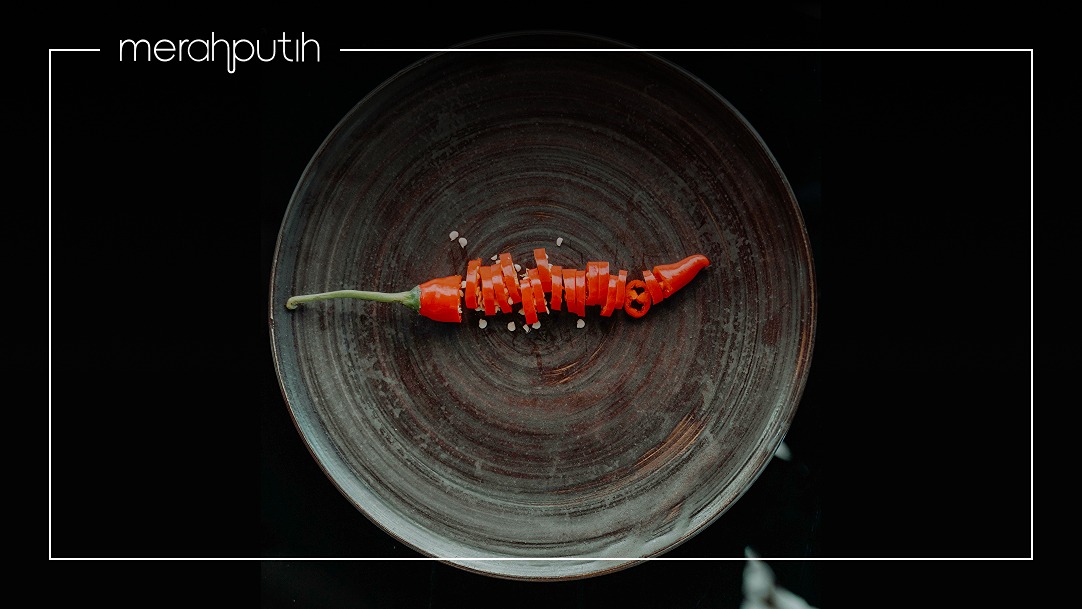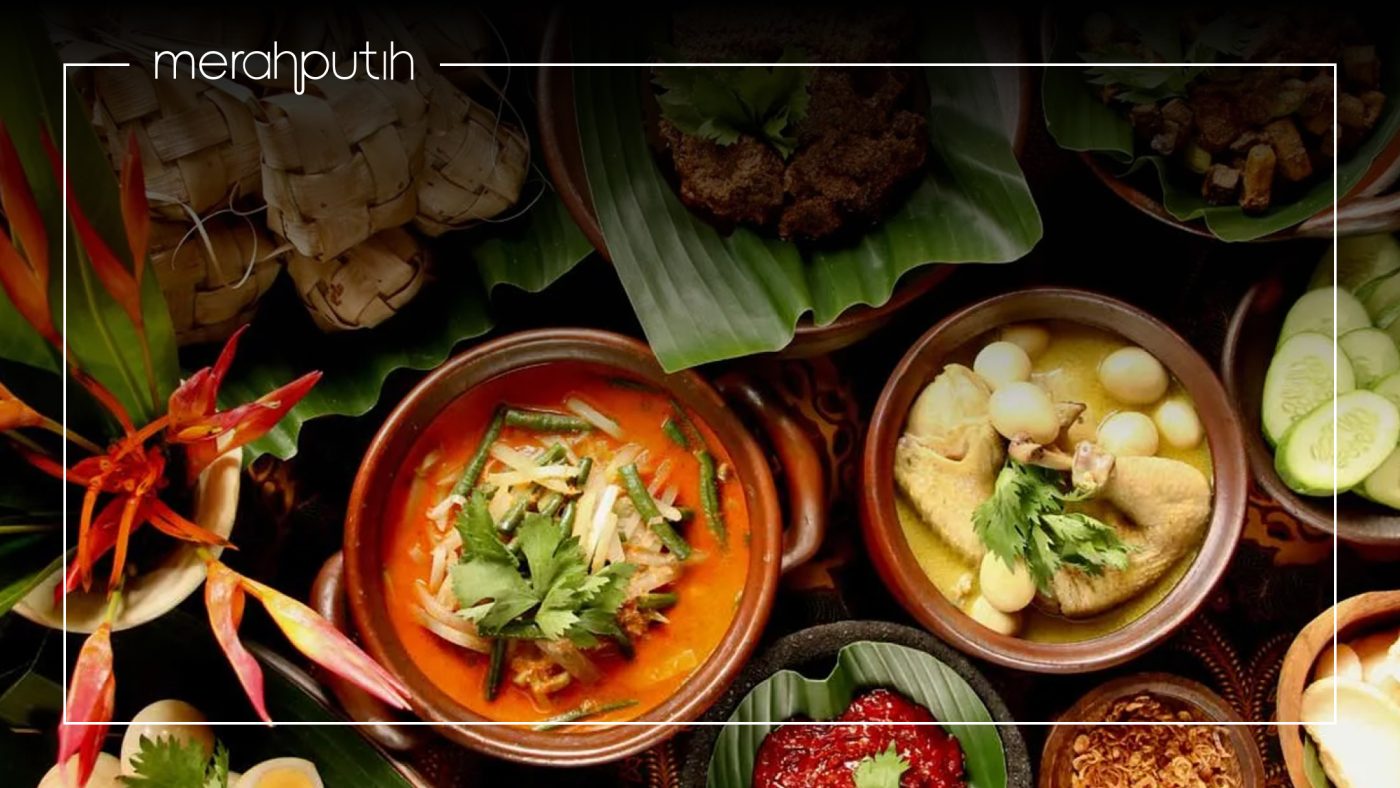If there’s one thing to know about Indonesians, it’s that they love their spicy food. The heat in most local dishes is something Indonesians would warn visitors about, as the amount of chili used in traditional Indonesian food is no joke. This is because of the abundance of chilies that grow in multiple regions across the archipelago and the historic cultural preference for spicy food, passed down through generations.
Many Indonesian recipes can be spiced up or down, depending on the amount of chilies used. It’s not so much a question of which food is the spiciest as it is how spicy you would like it to be.
Whether you love a good spicy kick or are looking to stay away from the heat, this list of spicy Indonesian food will guide you on what to try – or what to stay away from!
Rendang
Starting off at the mildest is rendang. This authentic Indonesian recipe from West Sumatra has made international acclaim.
Rendang is made of beef cooked over hours in coconut milk and spices, creating a rich and spicy curry-like dish. Herbs and spices used include bay leaves, lime leaves, lemongrass, turmeric leaves, and a good helping of chilies.
To reduce the heat on this spicy Indonesian food, enjoy it with plenty of rice. While rendang is known to be hell on the tongue, there are now many vendors that serve versions of this dish that aren’t as spicy.
Seblak
Indonesian street food is also known to pack quite the punch. Seblak is one such food that originates from West Java. While it has no particular nutritional value, it’s widely popular among locals.
Made by cooking kerupuk (Indonesian crackers) in a spicy broth, seblak can also contain added ingredients like chicken chunks, meatballs, or sausages. Many street food vendors innovate by using melted cheese, too.
Ayam taliwang
Nothing says chili-crazed than a devilishly spicy chicken dish served with sambal on the side. Lombok’s iconic ayam taliwang is one of the spiciest traditional Indonesian food, made with the twice-cooked method.
First, cuts of chicken are grilled until halfway done, then smashed in with a pestle. Once tender, the chicken is coated in a spicy chili sauce made of red chilies, shallots, garlic, kaffir, and shrimp paste. It then goes on the grill once more to add a nice char.
Every bite of this dish may be spicier than the last, but that never stops Indonesians from eating it with rice and a side of plecing – blanched watercress coated in sambal.
Rica-rica
North Sulawesi also contributes to the list of spicy Indonesian food. Whenever you see these words on a menu, know that it refers to a style of cooking any protein in a spicy umami sauce.
Spices used in this dish include shallots, garlic, ginger, lime leaves, lemongrass, and heaps of chili. This combination is blended together to form a paste before cooking with the protein, making for a fragrant dish.
Any kind of meat, from chicken to beef to seafood, can be cooked rica-rica style.
Balado
Another Indonesian cooking style is balado, originating from West Sumatra. Meaning “with chili,” this spicy Indonesian food is similar to rica-rica in that it’s essentially any protein with chili.
It’s more common to find vegetarian balado options, as Indonesians would also cook eggplants in this style.
Ayam geprek
Literally translating to “smashed chicken,” this traditional Indonesian food is hot and spicy and not for the weak. It consists of a crispy chicken, often battered and fried KFC-style, smashed in with a pestle until tender and slathered in chili paste.
When ordering this dish, which is commonly sold by street vendors and small chain restaurants, you can often ask for how many chilies you want in the sambal. Otherwise, it will leave a lasting heat on the lips long after you finish eating!
Variations on ayam geprek in other parts of Indonesia include ayam penyet, a similar smashed chicken dish from East Java.
Oseng mercon
You know this spicy Indonesian food doesn’t play around because its name means “firecracker stir fry.” Hailing from Yogyakarta, oseng mercon contains beef, stir-fried in – you guessed it – chilies.
Firecrackers are an apt comparison to the way the spiciness explodes out of every bite. To lessen the blow, serve this dish with lots of rice and a drizzle of sweet soy sauce.
Lidi
Sambal isn’t the only thing giving heat to Indonesian cuisine. Lidi, a popular children’s snack, is essentially sticks of deep-fried noodle coated in salt and chili powder. Though small and unassuming, this spicy Indonesian food is known to be one of the hottest, as there are multiple heat levels available.
For the equivalent of five cents, the spiciest level of lidi burns the tongue and the throat, leaving a hot and bitter aftertaste. Another form of the same snack uses deep-fried macaroni instead of noodles.
Ayam betutu
The Balinese are no strangers to the heat of bird’s eye chilies. Ayam betutu, the island’s most popular dish, is even listed on CNN’s list of the World’s Best Spicy Food. This traditional Balinese chicken dish is not one to miss.
“Betutu” comes from the Balinese word be meaning meat and tutu meaning grill. It’s a cooking technique of wrapping meat in banana leaves before grilling it. To make this iconic recipe, a whole chicken is marinaded in lime juice. While waiting, the cook would make base genep, the traditional Balinese spice blend consisting of galangal, turmeric, candlenuts, ginger, garlic, lemongrass, red chili, and aromatic ginger, among many others.
Half of the base genep is then stuffed into the chicken, while the other is used as a rub. Then, the chicken is wrapped in banana leaves and steamed for two hours before further cooking on the grill until the leaves turn a golden brown.
Wherever you go in Indonesia, you’re bound to encounter dishes that bring the heat. However, don’t let it scare you! You can always request for an adjustment to the spice to better fit your heat tolerance.
If your culinary journey brings you to Bali, Merah Putih restaurant is the perfect place to experience these traditional spicy flavours in style. Ayam betutu makes an appearance in the nasi campur, served during lunchtime for you to taste the depths of Balinese cuisine.
Book a table and use these special gift vouchers today.
FAQ
Many Indonesian recipes can be spiced up or down, depending on the amount of chilies used. It’s not so much a question of which food is the spiciest as it is how spicy you would like it to be.
Chilies are a staple part of many Balinese recipes, making the island’s cuisine particularly spicy. Ayam betutu, the island’s most popular dish, is even listed on CNN’s list of the World’s Best Spicy Food.
The heat in most local dishes is something Indonesians would warn visitors about, as the amount of chili used in traditional Indonesian food is no joke. This is because of the abundance of chilies that grow in multiple regions across the archipelago and the historic cultural preference for spicy food, passed down through generations.



